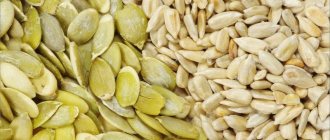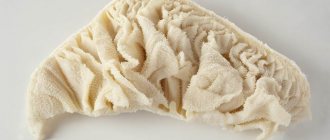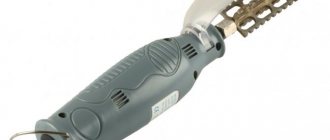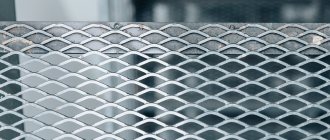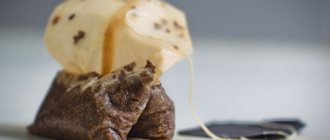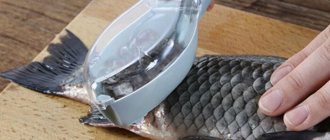Garlic is an indispensable seasoning in many dishes, and in pickled form it is also a complete vegetable snack. There’s just one problem: each of the teeth is covered with a durable shell. However, there are several surefire ways to quickly peel garlic.
If we are talking about a couple of teeth, which are necessary for the recipe, then there will be no difficulties. But when preparing a dish where garlic is one of the main components (for example, when marinating it), you should find some faster cleaning option. And, of course, I want to speed up the whole process, including dividing the head into individual cloves. Let's start with this.
How to properly peel garlic?
Traditionally, a knife is used to peel garlic. This method is reliable. Most likely, you will have to do some extra cleaning because a kitchen knife can't do everything for you.
What you will need:
- kitchen knife with wide blade
- several heads of garlic
- cutting board, preferably wooden
How to clean:
- Place the garlic horizontally on the board.
- Using a smooth knife motion, cut off the ends of the garlic clove on both sides.
- Place the wide side on the garlic and press. You can make several “swinging” movements.
- As soon as you hear a click, the knife should be removed.
- The coarse husk will separate, leaving a thin skin that can be peeled off with your hands.
This knife is suitable for peeling garlic.
You can also peel garlic entirely by hand using a small knife designed for peeling vegetables. But we must admit that this method is far from the most effective.
Usually, short thin knives are used for peeling vegetables.
Using a peeler or special centrifuge
The industry also has devices for quickly peeling garlic. Today you can find special peelers in bazaars and stores. They are usually made of silicone or soft plastic and consist of a small tube.
You need to put a few cloves of garlic inside the peeler, and then roll it on the table or between your hands for a while. This will take at least 30 seconds. But this depends on the type of raw material; fresh garlic with more moisture needs to be rolled longer. Once completed, clean cloves and remaining husks will fall out onto the table.
However, not everything is as perfect as advertisements or TV shopping shows. Much depends on the quality of the device, the presence of internal relief, and the intensity of rolling on the table. Another drawback in productivity: you can only peel 2-3 cloves of garlic at a time, no more.
Among the advantages, it is worth highlighting quite good efficiency, especially when peeling winter, drier garlic. Also, the garlic smell will not stick to your hands, since direct contact is minimal.
Disadvantages: the process is quite long and requires effort; good results are achieved only with intense skating. Performance also leaves much to be desired, with only a few cloves being cleaned at a time.
How to peel young garlic in 10 seconds?
Young garlic is much worse to peel than old garlic. It's all about thin soft partitions that have not yet had time to “harden”. Two ways to clean young garlic come to the rescue.
First way. Using a special silicone mat for peeling garlic. The device is designed specifically to help housewives (and owners) in the kitchen.
- Break the head of garlic into cloves.
- Place each clove in turn (you can have 2 cloves) on a special mat and twist it.
- Roll the resulting “tube” like a rolling pin for a few seconds.
- Unroll the mat and remove the husks.
- Proceed to the next clove.
the same mat for peeling garlic.
Method two. You’re unlikely to be able to peel young garlic in 10 seconds, but in 10 minutes it’s quite possible! In addition, at this time you will have completely free hands to do other things in the kitchen.
- Separate the head of garlic into individual cloves.
- Place the still unpeeled cloves into a bowl of cold water.
- Do other things.
- After 10 minutes, remove the peeled garlic.
Does the cleaning method depend on the type of garlic?
The unique taste and aroma of garlic has long attracted the attention of chefs. It is used in the preparation of ordinary and gourmet dishes. Some people even eat garlic raw, citing its antibacterial and antiviral properties. Indeed, garlic is a natural antibiotic, and therefore is able to protect the human body from many pathogenic microorganisms. Today, a huge number of varieties of garlic have been developed, which differ in the degree of heat, appearance and aroma. On markets in Russia you can most often find the following varieties:
- Gribovsky Jubilee;
- Komsomolets;
- Petrovsky;
- Gulliver;
- Degtyarsky;
- Elenovsky.
Regardless of the type of garlic, the method of cleaning it can be any. Dried heads are easiest to clean, but fresh ones are the most difficult to get rid of the husks. But the methods described above allow you to carry out the procedure as quickly and simply as possible.
You don't have to be a professional chef to peel garlic. You just need to choose the method appropriate to the quality and freshness of the garlic from the above. If you plan to add garlic to a hot dish, you can use heat treatment of the garlic. If a vegetable is added fresh to a salad, then it is best to use more gentle methods: the chef’s method or cleaning with a mat.
How to quickly peel garlic in a jar?
How else can you peel garlic? The answer comes unexpectedly - with the help of an ordinary jar! The method works for both one or more heads of garlic and cloves.
What do you need:
- garlic
- jar
How to do it:
- Place the heads of garlic in a jar.
- Close the jar tightly with a lid.
- Hold the jar by the bottom and lid with your hands and shake vigorously for a few seconds.
- Open the jar and pour the contents into a bowl.
- Select garlic from the mountain of peels.
Advice! Instead of a jar, you can use large glasses, bowls and even basins.
We have prepared a video about this!
Using a microwave oven
This is a popular modern method that stands out for its simplicity and speed. There is no need to even separate the head into cloves. The fundamental principle of operation is similar to hot water - the pulp expands faster than the husk when heated and cleans itself.
You need to take a saucer or plate and put the heads of garlic there. Then place it and set the correct time. For one clove, 15–20 seconds are enough. For the head, it is permissible to set 30–35 seconds, and then see whether the husk lags behind or not, adding 5–10 seconds if necessary. If you put too much, the garlic will begin to release aromas not into the dish, but into the void.
The method is perfect for fresh and winter garlic. It comes out fairly clean, with about 10% of the husk remaining, mostly the thin inner layers. This can be quickly fixed with a knife.
Among the disadvantages, it should be noted the need for precise timing. The garlic will begin to cook right in the microwave, and the precious aromas will disappear into thin air. It may also be undesirable for a dish if it involves using hard and unheated garlic.
Video:
how to quickly peel a lot of garlic Expand
How to quickly peel a lot of garlic?
A large amount of garlic can be peeled using boiling water. Just keep in mind that while you save significant time, you will lose in taste. After this cleaning method, garlic loses some of its taste and aroma.
What do you need:
- garlic
- bowl or plate
- hot water kettle
How to clean:
- Break the garlic into cloves.
- Pour hot water into the bowl, or even boiling water.
- Throw the garlic cloves into the water and wait a minute.
- Drain the water using a colander.
- Pick garlic from the pile of peels.
Use this method if you do not care about the loss of taste of the product
Garlic "device"
Aliexpress and regular hardware stores sell these silicone garlic peelers.
Silicone garlic peeler
The principle of operation is simple: put a few cloves of garlic inside and, pressing like a rolling pin, roll it on the table or between your palms. At the end you get garlic with the husk separated from it.
Many consider this “device” to be an indispensable assistant in the household. Its big advantage is that there is no garlic smell left on your hands. It is ideal when you need to peel a couple of cloves, but if you need a lot of garlic, you will have to tinker. And this is the disadvantage of this method.
Now you know all the life hacks for peeling garlic. Choose the method you like. Cook quickly and deliciously!
Water is the best helper
Cold water will help separate the scales from garlic that has been in the refrigerator for a long time. Just put it in a glass for half an hour and all the husks will float up. True, a thin film will remain on the surface of the cloves, so you will still have to use a knife. Wear medical gloves - they are thin, do not interfere with your fingers, but will protect you from garlic juice.
Useful tips
Garlic has a very persistent, specific smell that lingers on your hands and dishes for a long time after working. Some useful tips:
- Do not touch your eyes while peeling the garlic cloves.
- After work, you need to wash your hands in a solution of table salt or coffee grounds.
- Lemon juice and vegetable oil remove garlic odor from hands.
- Household chemicals remove odors well. After using them, you need to lubricate your hands with nourishing cream.
- You can eliminate the garlic aroma by washing dishes in a solution of salt or baking soda.
- Only mature garlic is suitable for long-term storage. It should be placed in a well-ventilated and dry room with a temperature of about 10-15 degrees.
- Sprouted garlic loses its beneficial qualities and acquires a bitter taste. To prevent this from happening, it must be stored correctly.
- Peeled garlic cloves can be placed in a glass jar and stored in the refrigerator for several months.
- Whole, unpeeled garlic bulbs sprinkled with coarse salt store well in glass jars. You can add salt and peeled garlic. Close the jars with lids and place in a cool place.
Dry peeling garlic
Press the cloves with a knife - chef's method - 1st method
This method of peeling garlic is mainly used by chefs. The head of garlic is peeled from the outer covering and divided into cloves. Place each clove on a flat, level surface, such as a cutting board, and press it firmly with the flat surface of a wide chef's knife.
The clove opens with a crack, throwing off its protective covers. This husk is easily separated from the peeled clove. And the garlic is then chopped into small, medium, or large pieces.
The advantages of this method include the speed of peeling a clove of garlic. There is no need to prepare the garlic in advance in the vegetable shop. Long shelf life of an uncut head of garlic and its cleaning, immediately before cooking. The high juiciness of the garlic is preserved. No special equipment or special skills are required.
The disadvantages include the fact that on the outer covers of garlic there may be soil and dirt from the place of growth. Theoretically, it can mix with the crushed core of the clove. The productivity of this method when cleaning the entire head is low. In the future, you can only use garlic, cut into slices. There is no possibility of long-term storage of peeled garlic.
Bowl, rolling pin, hammer, second method of peeling garlic
If this performance of cleaning garlic cloves is not enough for you, you can increase it. You can do this in the following way. Prepare more garlic cloves. Choose them to be approximately equal in size. And crush them using a larger flat object - a saucer or metal plate.
For this cleaning method, you will need cling film. And also a rolling pin or hammer for beating meat. Divide the head of garlic into the number of cloves required for peeling. Wrap them in cling film. Roll the garlic with a rolling pin, or hit it with the flat side of a hammer to beat the meat.
After this, unroll the film. Remove the husks and use clean, crushed slices for further grinding. Productivity with this method of peeling garlic increases manifold. But the disadvantages are the same as with the chef’s cleaning method.
“Bowl, rolling pin, hammer” - the second method of peeling garlic
“Halves” - 3rd way to peel garlic
The essence of the method of peeling garlic is “Halves”. The point is that to peel a head of garlic, minimal preliminary preparation is required. You need to take a head of garlic and cut it into two halves at the widest part. Next, you need to place both parts cut side down on a table or cutting board.
From above, flat, alternately hit both tops of the cones of garlic halves with the flat of the knife. Remove the tops and roots of the garlic cones by the tail. At the bottom you will be left with clean, straight and intact garlic clove halves. This method of peeling garlic is simple and quick. I’ll test it out, maybe it will become my favorite way to clean garlic.
The only thing that might not like it is. These are cooks who need whole cloves of garlic for a recipe. Them
Those who need them, or who are curious about the other seven ways to peel garlic, need to read on.
I tried this cleaning method. Honestly, I can’t say that everything worked out for me. The halves of the slices reluctantly left their pockets. Apparently I took not very dry heads of garlic. Until this method has become my favorite method for peeling garlic heads.
“Maracas game” - 4th way to peel a lot of garlic
I'll calm you down right away. To use this method of peeling garlic, you do not need to have an ear for music or specialized music education. It is not necessary to know how to play maracas or other musical instruments. You just need to have two identical metal cups in your kitchen. At worst, a saucepan, or a glass jar with a screw-on lid.
I provide a video and description for two metal cups that I have. You use what you have - a saucepan or a jar with lids. For this method of cleaning garlic, its head must be freed from the outer covering. And divide it into separate teeth.
The head is divided into teeth, placed in one cup and covered with another. Shake the cups with garlic cloves vigorously for one to two minutes. The cloves, hitting the walls of the cup and each other, are peeled.
All you have to do is remove the clean garlic cloves from the cup and remove the skins. Cloves that are not peeled need to be shaken thoroughly again or twice. Until the lobules are completely cleansed. Additional benefits of this method are the speed and intact cloves that result from peeling.
To use this method of peeling garlic, you need to be in good physical shape. Since you will have to shake continuously and with effort. I don't really like this cleaning method. Since the cloves come out crumpled from impacts, have a dark barrel and are not stored for a long time.
In a clear marinade, for example, they darken even more. And they take on the color of not fresh, not healthy vegetables.
“Microwave” or 5 ways to quickly peel garlic
To be honest, I have never used this method of peeling garlic before. I came across it online while preparing for this article. But I tried it and give a description below. This method can be used to peel several heads of garlic at the same time. In the video I use one as an example.
Just in case, I trimmed the bottom, root part of the garlic head in advance. The microwave oven does not like confined spaces. In the case of rapid internal heating of the product, a place for the thermal energy to escape outside is necessary.
Place the head of garlic in the microwave for 15 seconds at maximum heating power. For me it is 800 watts. After 15 seconds, I took the still hot head of garlic out of the microwave. I let it cool slightly and easily removed the remaining skin from the garlic. The method is easy and productive.
All cloves are intact and ready for both independent use and for chopping and storage. The disadvantages, I would include, although short-lived, are quite powerful and intense thermal effects on garlic.
The garlic cloves became soft and warm. It seems to me that they were fried inside and lost a number of their valuable properties, unique vitamins and phytoncides.
I would not use this garlic to prepare homemade tinctures and crushed medicinal preparations based on it for blood pressure and colds. For use in dishes where a lot of garlic is needed and it is subjected to further heat treatment - with pleasure.
It seemed to me that after microwave it became less hot. In this capacity, it can be popularized among children - as a seasoning and as a medicine.
“Garlic peeler” - 6th method of peeling garlic
And they roll their hands on the hard surface of the table. I don't have this device. I didn't buy it for the sake of the article. To peel the garlic, I use a silicone baking mat. I will roll it into a tube of the required diameter and secure the outer layer with tape so that it does not open during rolling.
The principle of removing the peel from garlic cloves is similar to removing dry garlic skin when “playing maracas.” Only now the garlic peel is removed by friction and pressure. Having tried to peel 5 cloves of garlic in this way, I can say this method works quite well.
Literally 30 seconds later, all five cloves of garlic were cleared of the peel covering them. Fast enough. All slices are whole and clean. They can be used for medicine, for preparations, and for cooking. They retained vitamins, essential oils, and phytoncides.
“Slices” - peeling a head of garlic with a vegetable knife - method 7
When I first saw this video on the Internet, I wanted to try it out. In it, a woman, a lover of Korean cuisine, deftly manipulated a head of garlic with a vegetable knife. In a matter of seconds, peeling it into pieces. I also decided to try this cleaning method and include it in the article.
The skin cuts through easily, the cloves come off almost effortlessly. I’m simply amazed how people didn’t know or use this method of peeling garlic before. He is so simple and natural. The teeth are intact, not wrinkled, with a small longitudinal cut on the back. It makes it easier for garlic juice to get onto the product or into the marinade.
The cloves can be crushed or used whole for marinades, tinctures and stuffing. Since garlic is not deformed when peeled, it does not change color. Garlic cloves retain their taste, aroma, and bright burning taste. All its beneficial properties and medicinal qualities.
Apparently I did something wrong after all. It seems to me that you first need to make a longitudinal cut on the garlic clove. Then it will come out of the pocket easier. My slices turned out to be strongly cut lengthwise, in the middle, with a knife.
The seventh method of peeling garlic, which did not work for me
Many of the methods are effective with well-dried garlic. To peel young and wet garlic, use wet peeling.
In oil
You can preserve peeled garlic using oil and dried herbs.
To do this you need the following:
- Place the peeled slices with various spices into a glass container up to the neck.
- Top the container with oil and leave in a cool, dark and dry place for 14 days. The blanks should be saturated, acquire a golden color and become translucent.
- Store the vegetable for 6 months in a cool, dark place.
The secret of the specialists
It turns out that professional chefs have a secret that you will now know too. Cut off the ends of the slice and place it on the edge. Then press the clove with a knife and the husk will fall off on its own. But this method is not suitable if you need a whole slice, because under pressure it flattens and begins to release juice. In all other cases, this is the best method for peeling garlic.
Storage rules
In addition to using the recipes described above, it is necessary to follow the appropriate rules under which the product will be stored for a long time and without loss of quality:
- For long-term storage, it is necessary to take only fresh fruits of good quality, without signs of spoilage.
- It is better to store closed jars of harvested garlic in a cool, dark place slightly below room temperature. In a warm room, garlic fruits may begin to deteriorate, so it is necessary to periodically check them for suitability.
- Peeled fresh slices should not be kept in a closed plastic bag, as this promotes the formation of condensation. Mold will quickly appear on the cloves.
By observing all the necessary conditions, you can keep this healthy product fresh and juicy for a long time. Think in advance about how you will store the garlic so that you can use it as needed.
Which garlic is easier to peel?
There are so many things that don't happen in this world. There is, for example, the single-claw Solo garlic, which is more reminiscent of an onion, albeit with a recognizable spicy aroma. Cleaning it is a real pleasure; no fuss with small slices! True, it is difficult to find real Solo anywhere other than large supermarkets, and in terms of cost it is much inferior to the “lobed” garlic we are used to.
The Solo variety is strikingly different from its counterparts
The more traditional varieties in our area - Yubileiny, Gulliver, Parus - are a different matter. They are both more accessible and cheaper. But they cause trouble when cleaning! The housewife, who will have to prepare for a big feast or preserve, is especially tormented: while you free a dozen or two cloves from the sticky husk, you will lose a lot of time and fray your nerves.
All that remains is to master the methods of express peeling garlic, fortunately, many of them have been invented. And also learn to choose from a variety of toothed heads those that are easier to part with their rustling skin. Here it is better to pay attention not to the variety - it has little effect on cleaning - but to the age and method of storing the spice. Young fresh slices and damp cloves are “exposed” reluctantly; even culinary tricks do not always work with them. But those that have been lying down and properly dried, jump out of the husk with a bang!
